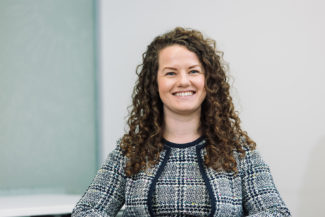Court of Appeal confirms revocation of trastuzumab/taxane combination patent
12.12.2016
The article was first published in Kluwer Patent Blog, December 2016
On 30 November 2016 the Court of Appeal handed down judgment in the latest chapter of the Hospira v Genentech epic surrounding Genentech’s blockbuster drug trastuzumab (Herceptin®) (Hospira v Genentech[2016] EWCA Civ 1185). This instalment concerned a patent for use of the antibody trastuzumab in combination with a traditional chemotherapeutic agent, a taxane, for the treatment of HER-2 positive breast cancer (EP 1,037,926) (the “Patent”). Genentech appealed the decision of Arnold J [2015] EWHC 1796 (Pat), in which the Judge held that the patent was obvious in light of a review article entitled HER2 Overexpression and Paclitaxel Sensitivity in Breast Cancer: Therapeutic Implications (“Baselga 97”) and was therefore invalid.
The Patent summarised the results of a Phase III clinical trial of trastuzumab in combination with paclitaxel (Taxol®), a taxane, in the treatment of certain types of breast cancer compared to the use of paclitaxel alone. It was a requirement of the main Swiss-type claim that the combination of trastuzumab with the taxane be more effective in treating certain types of cancer than the taxane alone, resulting in an increased time to disease progression.
Baselga 97 disclosed that the Phase III trial described in the patent was being carried out, but did not disclose the results. At first instance Arnold J held that Baselga 97 made it obvious to try a combination of trastuzumab and paclitaxel, and the question was therefore whether the skilled person would have the requisite fair expectation of success. In this respect the Judge held that the skilled person would agree with the authors of Baselga 97 that the results of previous studies were “positive” and “encouraging” and so would justify a Phase III trial of the combination despite the fact that a previous Phase II trial has not been conducted. The Judge therefore held that the skilled person would have a fair expectation of success.
On appeal, Genentech argued that the Judge had fallen into two major errors in his analysis of inventive step. First, it was said, the Judge had taken the wrong approach to what was a fair expectation of success. Second, Genentech argued that Arnold J had failed to take proper account of the position of the skilled person.
As to the first argument, the Court of Appeal rejected the contention that in cases where the claims include as part of their subject matter obtaining a therapeutic effect or benefit, it is necessary for the skilled person to have a very high expectation of success of being more or less self-evident that it ought to work. Floyd LJ, who gave the leading judgment, said that if accepted this would amount to the creation of a lex specialis (a legal doctrine) for such claims which would depart from the proper assessment of the requisite expectation of success i.e. a multi-factorial assessment of all the relevant circumstances.
Genentech had advanced a second limb of this argument and submitted that the Judge treated the invention as obvious on the basis of evidence that a clinical scientist would regard the trial as “justified”, and this could not constitute a fair expectation of success. The Court of Appeal rejected this contention too, finding that Baselga 97 and the expert evidence on its interpretation by the skilled person formed a sound basis on which the Judge could find a fair expectation of success.
On the second alleged error, Genentech argued that the Judge had failed to put himself in the position of the skilled person when assessing the burden of work which would be required of the skilled person to carry out the Phase III trial which in turn would weigh against the required expectation of its success. The skilled person, unlike Genentech, did not have trastuzumab or another anti-HER2 antibody to hand, they would have to make and purify the antibody and formulate it for administration in humans. Next they would have to undertake preclinical and early clinical trials to evaluate safety of the combination.
Floyd LJ also dismissed this argument, finding that whilst the judge accepted that there would be a significant burden in time and money involved in carrying out such a Phase III trial, in technical terms this was within the capacity of the skilled person and amounts to no more than the patentee expected of the skilled person when carrying out the teaching of the patent. In this respect Floyd LJ held that the judge was “entitled to use the patent specification as a guide to the nature and burden of the work involved”. This part of the judgment highlights that it is technical, rather than commercial, hurdles which may defeat an obviousness attack.
Overall the Court of Appeal found no error of principle on which to overturn the Judge’s finding of obviousness and the appeal was dismissed.
This is the second decision, involving trastuzumab, in which the Court of Appeal has refused to interfere with a first instance decision on obviousness (see Hospira v Genentech [2016] EWCA 780) and is a useful reiteration of the law on inventive step.

Chloe Dickson
Author
